Solar eclipse of February 25, 1952
A total solar eclipse occurred on February 25, 1952. A solar eclipse occurs when the Moon passes between Earth and the Sun, thereby totally or partly obscuring the image of the Sun for a viewer on Earth. A total solar eclipse occurs when the Moon's apparent diameter is larger than the Sun's, blocking all direct sunlight, turning day into darkness. Totality occurs in a narrow path across Earth's surface, with the partial solar eclipse visible over a surrounding region thousands of kilometres wide. The path of totality crossed Africa, the Middle East, and Asia.
| Solar eclipse of February 25, 1952 | |
|---|---|
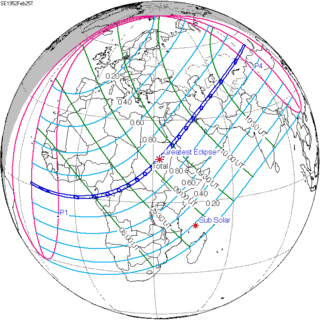 Map | |
| Type of eclipse | |
| Nature | Total |
| Gamma | 0.4697 |
| Magnitude | 1.0366 |
| Maximum eclipse | |
| Duration | 189 sec (3 m 9 s) |
| Coordinates | 15.6°N 32.7°E |
| Max. width of band | 138 km (86 mi) |
| Times (UTC) | |
| Greatest eclipse | 9:11:35 |
| References | |
| Saros | 139 (26 of 71) |
| Catalog # (SE5000) | 9402 |
Related eclipses
Solar eclipses of 1950–1953
This eclipse is a member of a semester series. An eclipse in a semester series of solar eclipses repeats approximately every 177 days and 4 hours (a semester) at alternating nodes of the Moon's orbit.[1]
| Solar eclipse series sets from 1950–1953 | ||||||
|---|---|---|---|---|---|---|
| Ascending node | Descending node | |||||
| Saros | Map | Saros | Map | |||
| 119 | 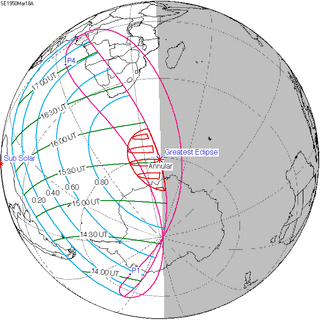 March 18, 1950 Annular (non-central) |
124 | 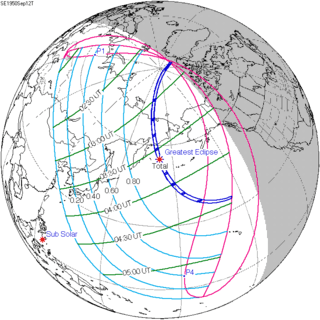 September 12, 1950 Total | |||
| 129 | 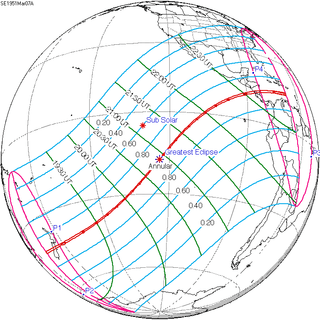 March 7, 1951 Annular |
134 | 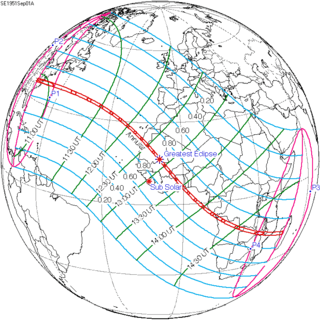 September 1, 1951 Annular | |||
| 139 |  February 25, 1952 Total |
144 | 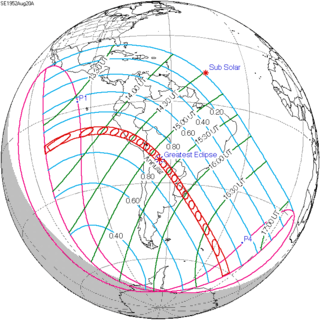 August 20, 1952 Annular | |||
| 149 |  February 14, 1953 Partial |
154 | 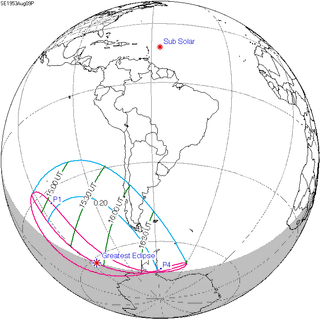 August 9, 1953 Partial | |||
| Solar eclipse of July 11, 1953 belongs to the next lunar year set | ||||||
Saros 139
It is a part of saros series 139, repeating every 18 years, 11 days, 8 hours, containing 71 events. The series started with partial solar eclipse on May 17, 1501. It contains hybrid eclipses on August 11, 1627 through December 9, 1825 and total eclipses from December 21, 1843 through March 26, 2601. The series ends at member 71 as a partial eclipse on July 3, 2763. Members in the same column are one exeligmos apart and thus occur in the same geographic area.
The solar eclipse of June 13, 2132 will be the longest total solar eclipse since July 11, 1991 at 6 minutes, 55.02 seconds.
The longest duration of totality will be produced by member 39 at 7 minutes, 29.22 seconds on July 16, 2186.[2] This is the longest solar eclipse computed between 4000BC and 6000AD.[3]
After 16 July 2186, totality duration will decrease. All eclipses in this series occurs at the Moon’s ascending node.
| Series members 24–45 occur between 1901 and 2300 | ||
|---|---|---|
| 24 | 25 | 26 |
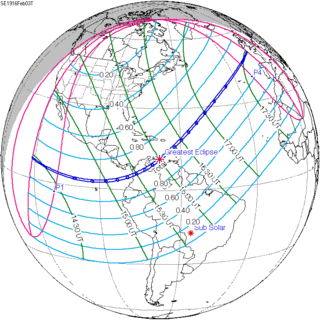 February 3, 1916 |
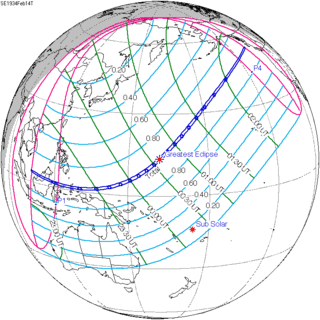 February 14, 1934 |
 February 25, 1952 |
| 27 | 28 | 29 |
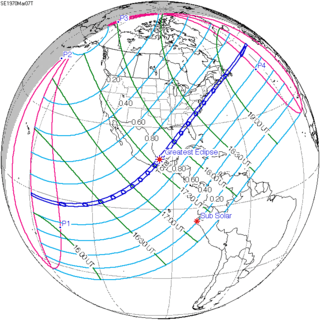 March 7, 1970 |
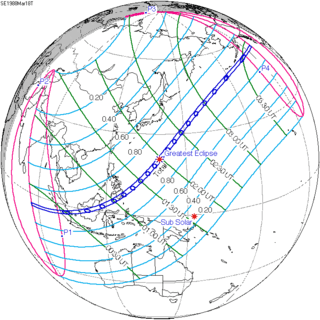 March 18, 1988 |
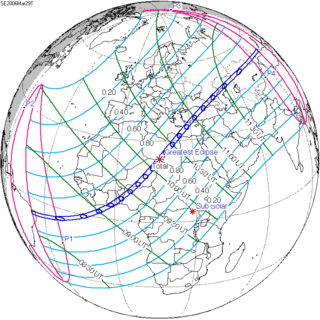 March 29, 2006 |
| 30 | 31 | 32 |
 April 8, 2024 |
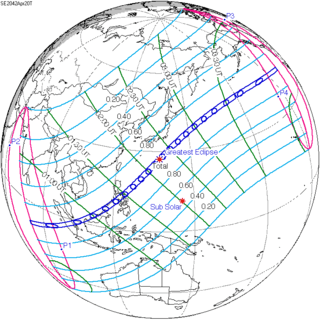 April 20, 2042 |
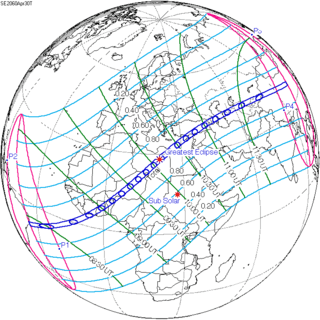 April 30, 2060 |
| 33 | 34 | 35 |
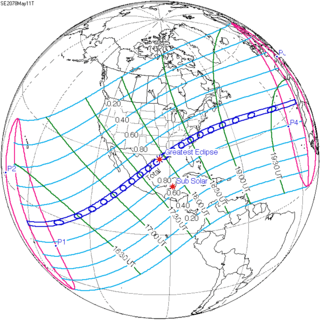 May 11, 2078 |
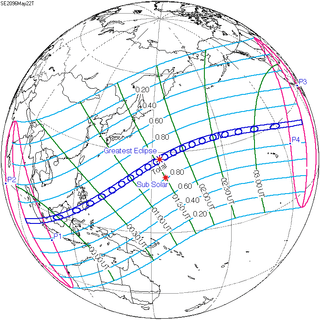 May 22, 2096 |
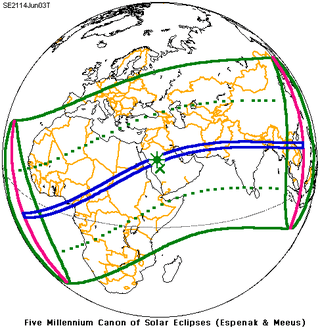 June 3, 2114 |
| 36 | 37 | 38 |
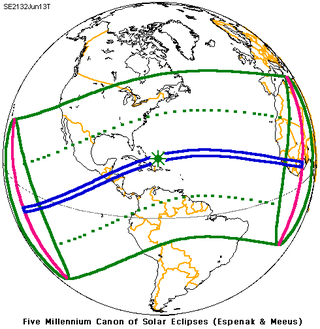 June 13, 2132 |
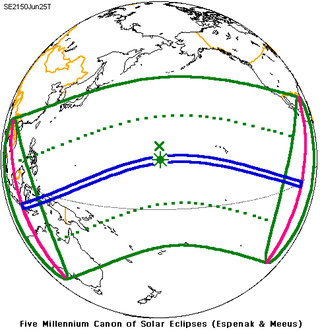 June 25, 2150 |
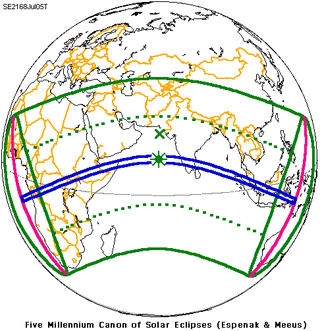 July 5, 2168 |
| 39 | 40 | 41 |
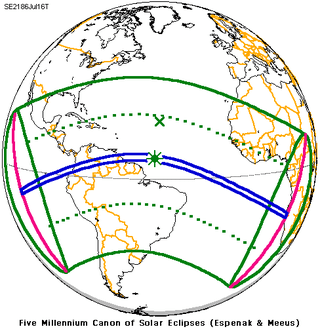 July 16, 2186 |
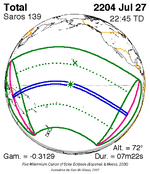 July 27, 2204 |
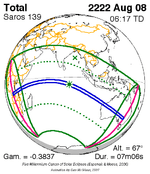 August 8, 2222 |
| 42 | 43 | 44 |
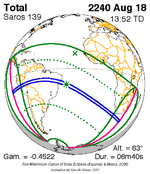 August 18, 2240 |
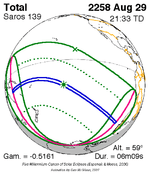 August 29, 2258 |
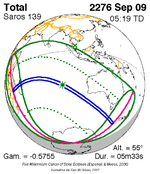 September 9, 2276 |
| 45 | ||
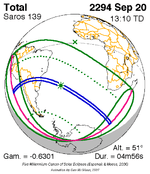 September 20, 2294 | ||
Metonic series
The metonic series repeats eclipses every 19 years (6939.69 days), lasting about 5 cycles. Eclipses occur in nearly the same calendar date. In addition, the octon subseries repeats 1/5 of that or every 3.8 years (1387.94 days).
| 21 eclipse events between July 21, 1906 and July 20, 1982 | ||||
|---|---|---|---|---|
| July 20–21 | May 9 | February 24–25 | December 13–14 | October 1–2 |
| 105 | 107 | 109 | 111 | 113 |
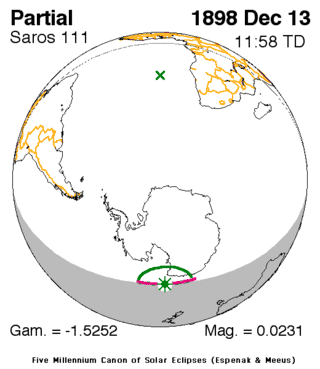 December 13, 1898 |
||||
| 115 | 117 | 119 | 121 | 123 |
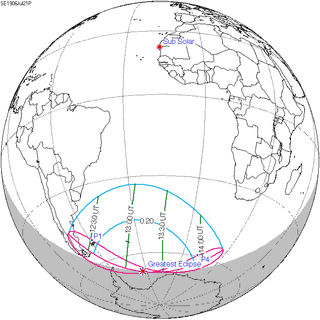 July 21, 1906 |
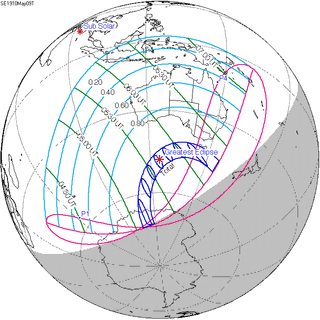 May 9, 1910 |
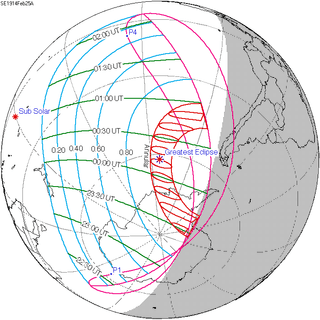 February 25, 1914 |
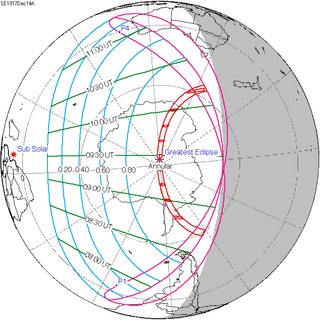 December 14, 1917 |
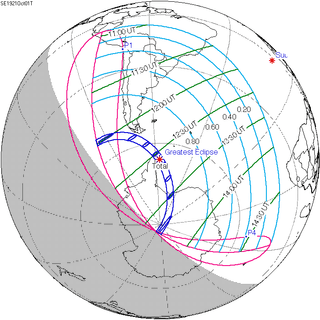 October 1, 1921 |
| 125 | 127 | 129 | 131 | 133 |
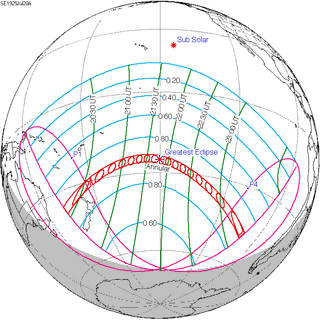 July 20, 1925 |
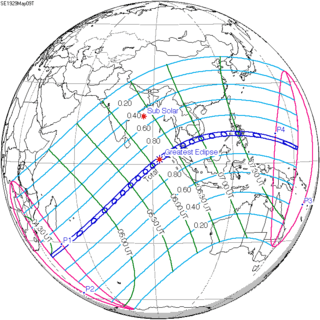 May 9, 1929 |
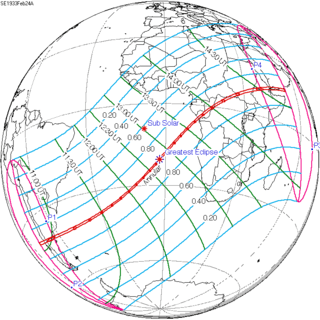 February 24, 1933 |
 December 13, 1936 |
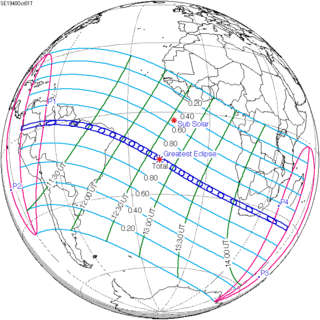 October 1, 1940 |
| 135 | 137 | 139 | 141 | 143 |
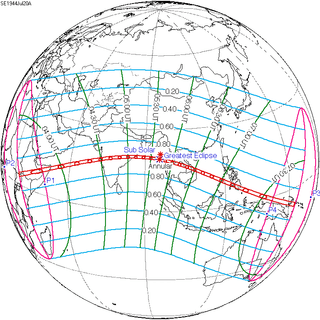 July 20, 1944 |
 May 9, 1948 |
 February 25, 1952 |
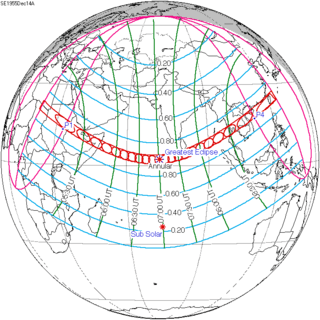 December 14, 1955 |
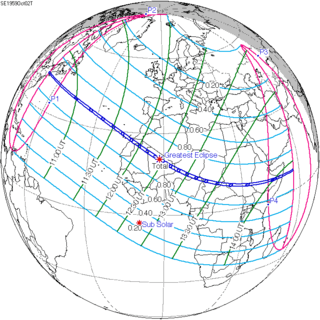 October 2, 1959 |
| 145 | 147 | 149 | 151 | 153 |
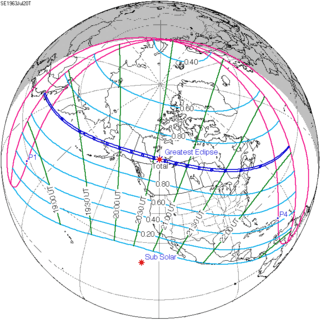 July 20, 1963 |
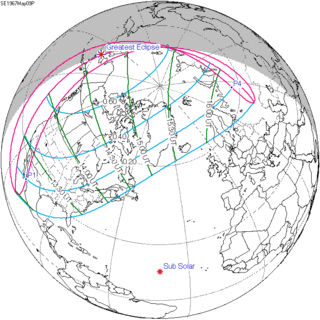 May 9, 1967 |
 February 25, 1971 |
 December 13, 1974 |
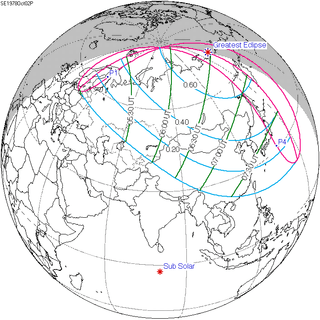 October 2, 1978 |
| 155 | ||||
 July 20, 1982 | ||||
Notes
- van Gent, R.H. "Solar- and Lunar-Eclipse Predictions from Antiquity to the Present". A Catalogue of Eclipse Cycles. Utrecht University. Retrieved 6 October 2018.
- Saros Series Catalog of Solar Eclipses NASA Eclipse Web Site.
- Ten Millennium Catalog of Long Solar Eclipses, -3999 to +6000 (4000 BCE to 6000 CE) Fred Espenak.
.jpg)
